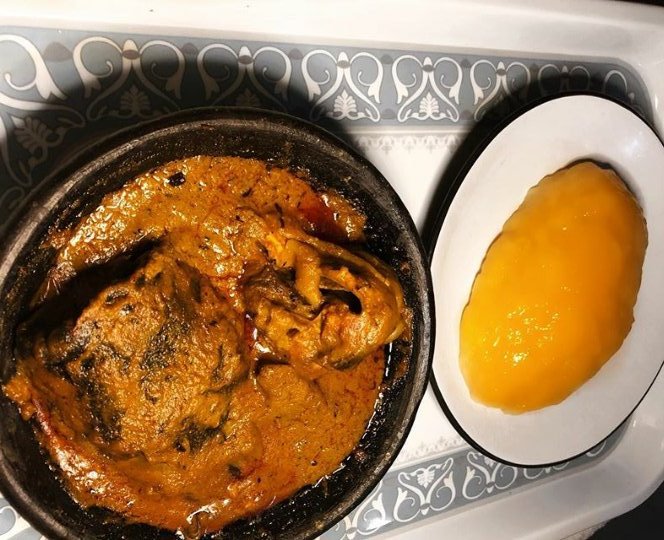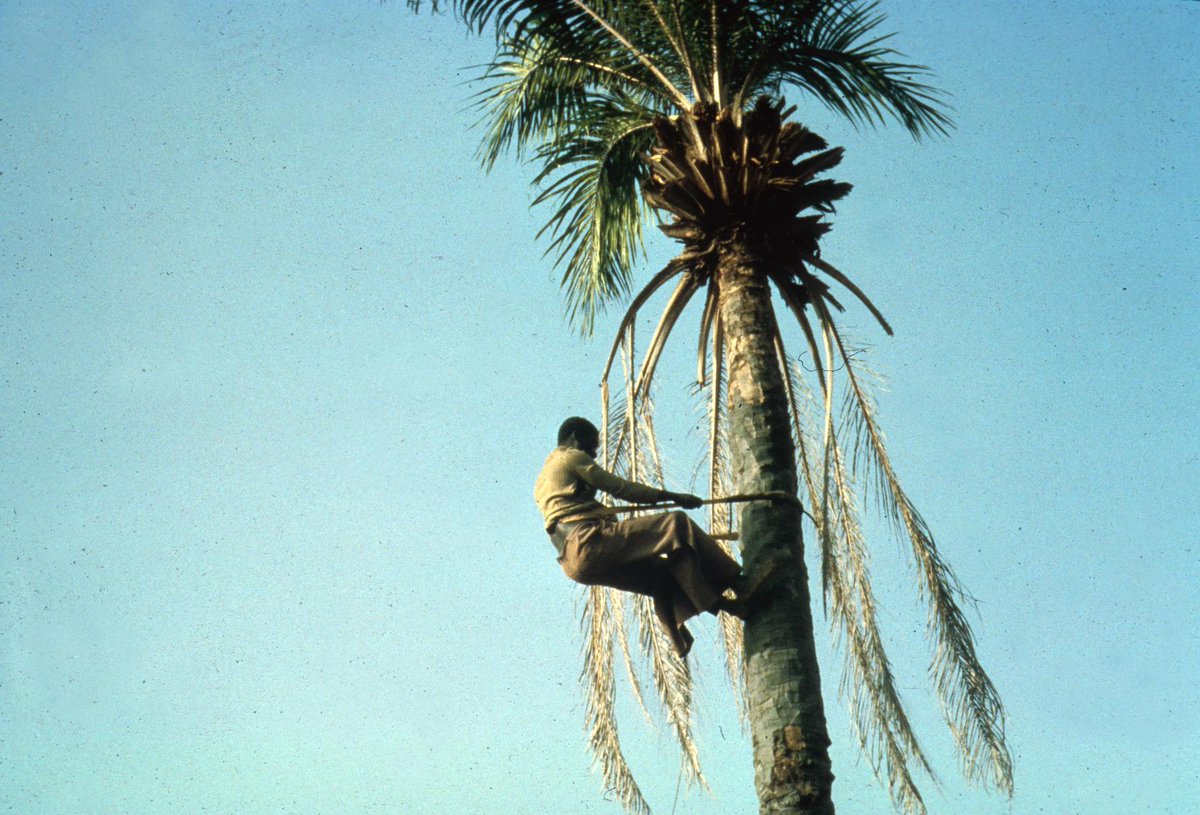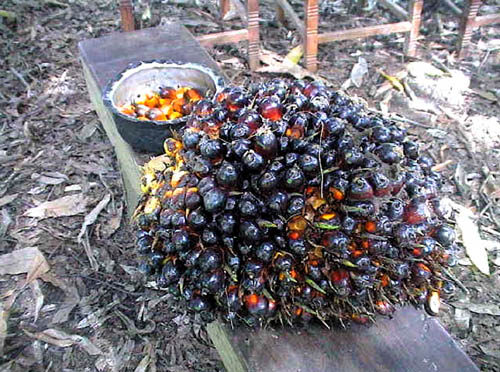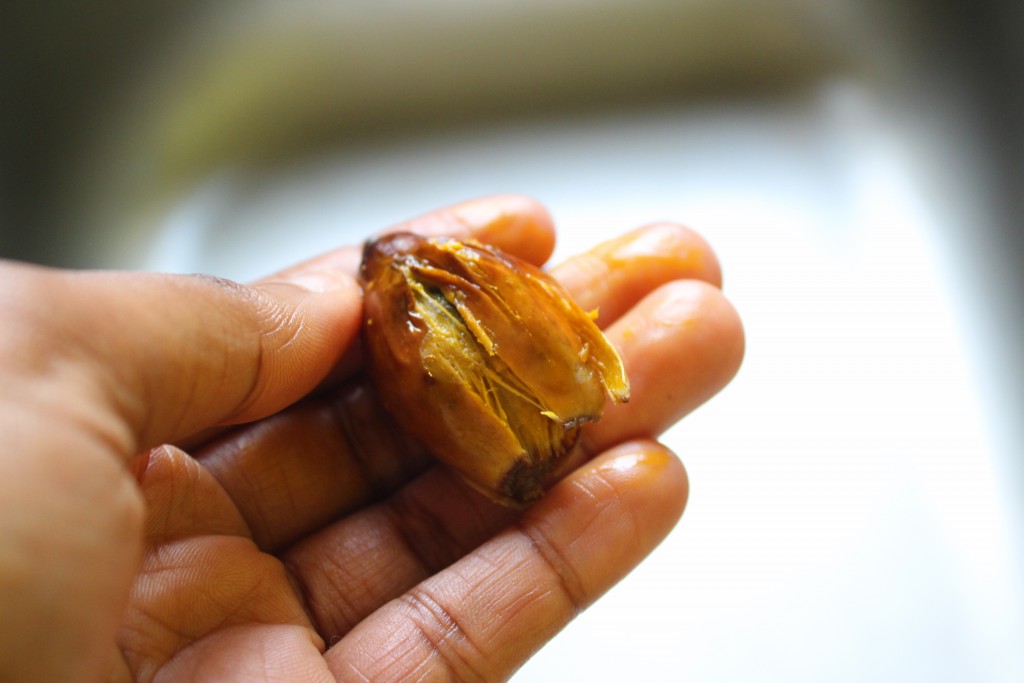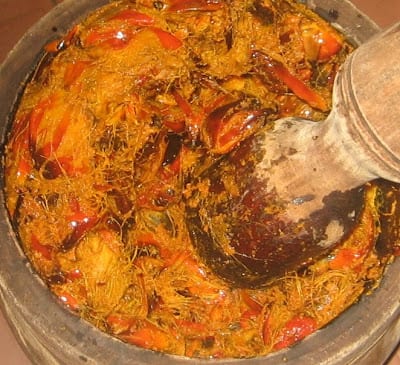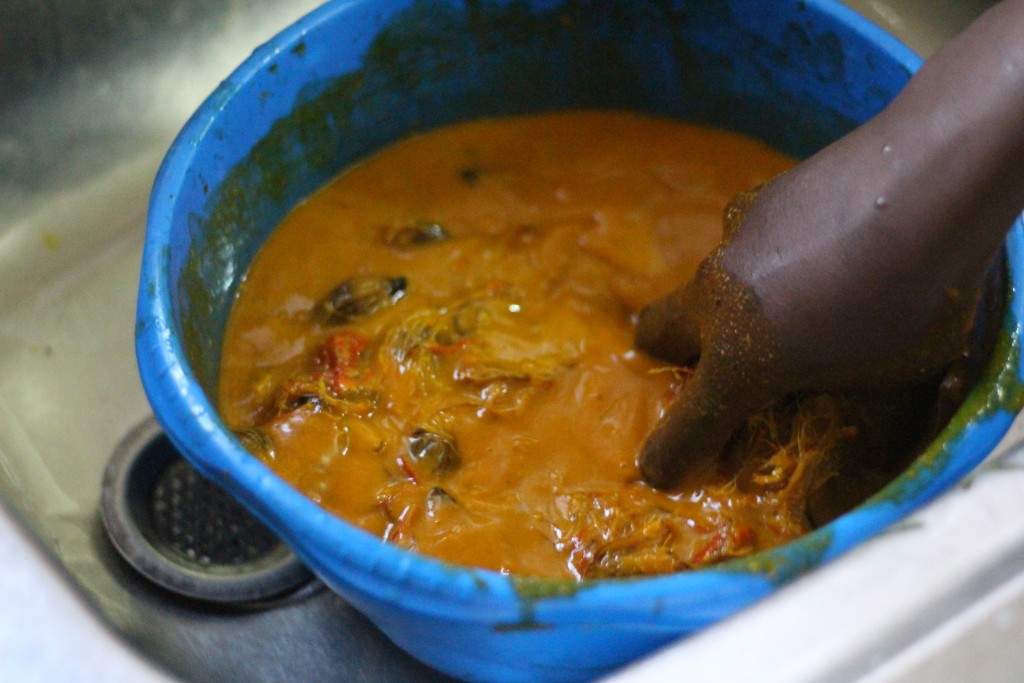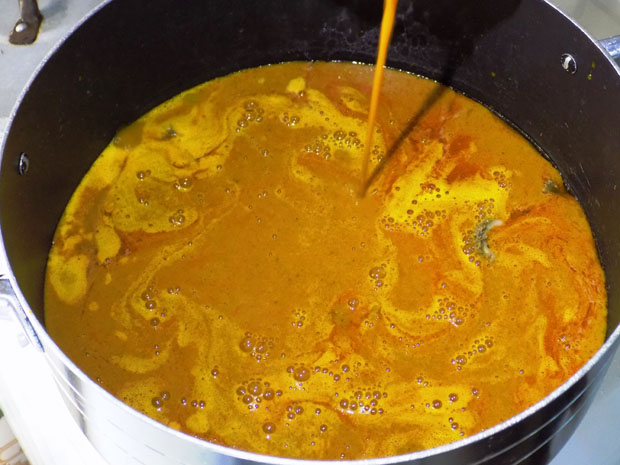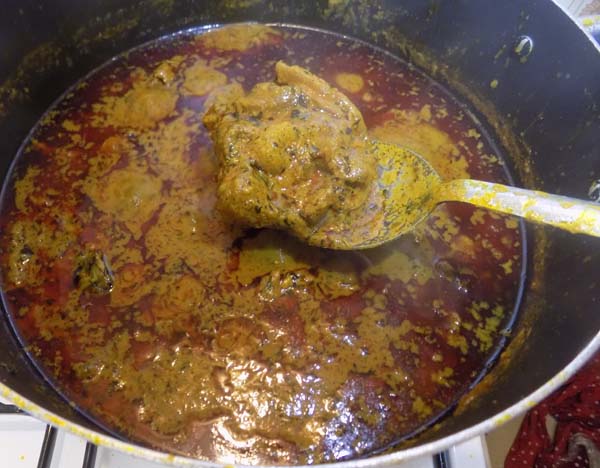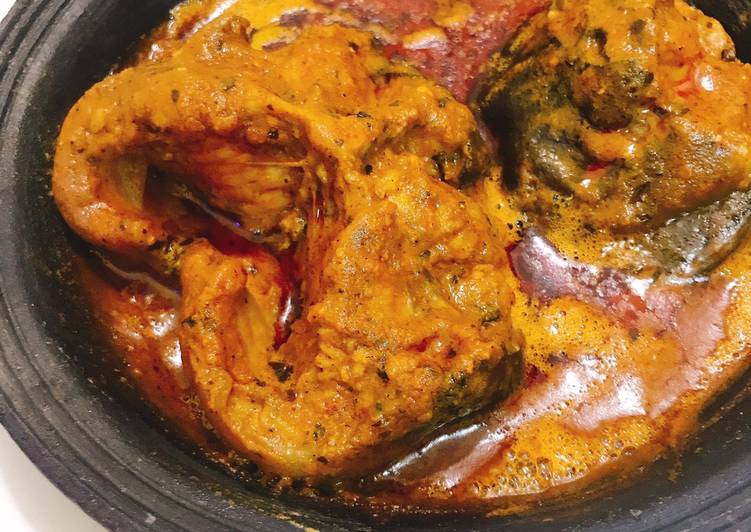2. It is usually a tough climb to get the palm fruit from the tree.
I have heard of instances where people have fallen from palm trees, broke parts of their body and some have died in the process of attempting to pluck this fruit.
I have heard of instances where people have fallen from palm trees, broke parts of their body and some have died in the process of attempting to pluck this fruit.
3. The seeds in the fruit are surrounded by hard spikes.
I have had bad experiences trying to remove the banga seeds from the bunch. I bet it requires some form of skill.
I have had bad experiences trying to remove the banga seeds from the bunch. I bet it requires some form of skill.
4. The seeds need to be boiled for long periods till they soften enough for pounding.
The seeds are first washed with clean water to remove sand and debris. The seeds are sometimes partially covered with a sheath which needs to be removed before boiling.
The seeds are first washed with clean water to remove sand and debris. The seeds are sometimes partially covered with a sheath which needs to be removed before boiling.
5. Once the banga has softened, they are transferred to a mortar for pounding.
This pounding is not for the feeble as it would demand a lot from you.
The pounding requires smart technique (Not too hard so as not to smash the nuts and not too gentle so you don& #39;t sleep on it).
This pounding is not for the feeble as it would demand a lot from you.
The pounding requires smart technique (Not too hard so as not to smash the nuts and not too gentle so you don& #39;t sleep on it).
6. The liquid strained after pounding is boiled for some minutes. The ingredients needed to give it that peculiar taste and aroma are then added to the broth. The liquid is allowed to boil till it thickens.
The soup could now be said to be ready for consumption.
The soup could now be said to be ready for consumption.
7. In some places in Southern Nigeria, banga soup is only ready to be eaten when it has been properly simmered in a clay pot (ewere) until it becomes really thick and served bubbling hot!
It is best eaten with starch, eba and any other swallow of choice.
It is best eaten with starch, eba and any other swallow of choice.
Note: This is not to discredit the favourite delicacy in my state.

 Read on Twitter
Read on Twitter